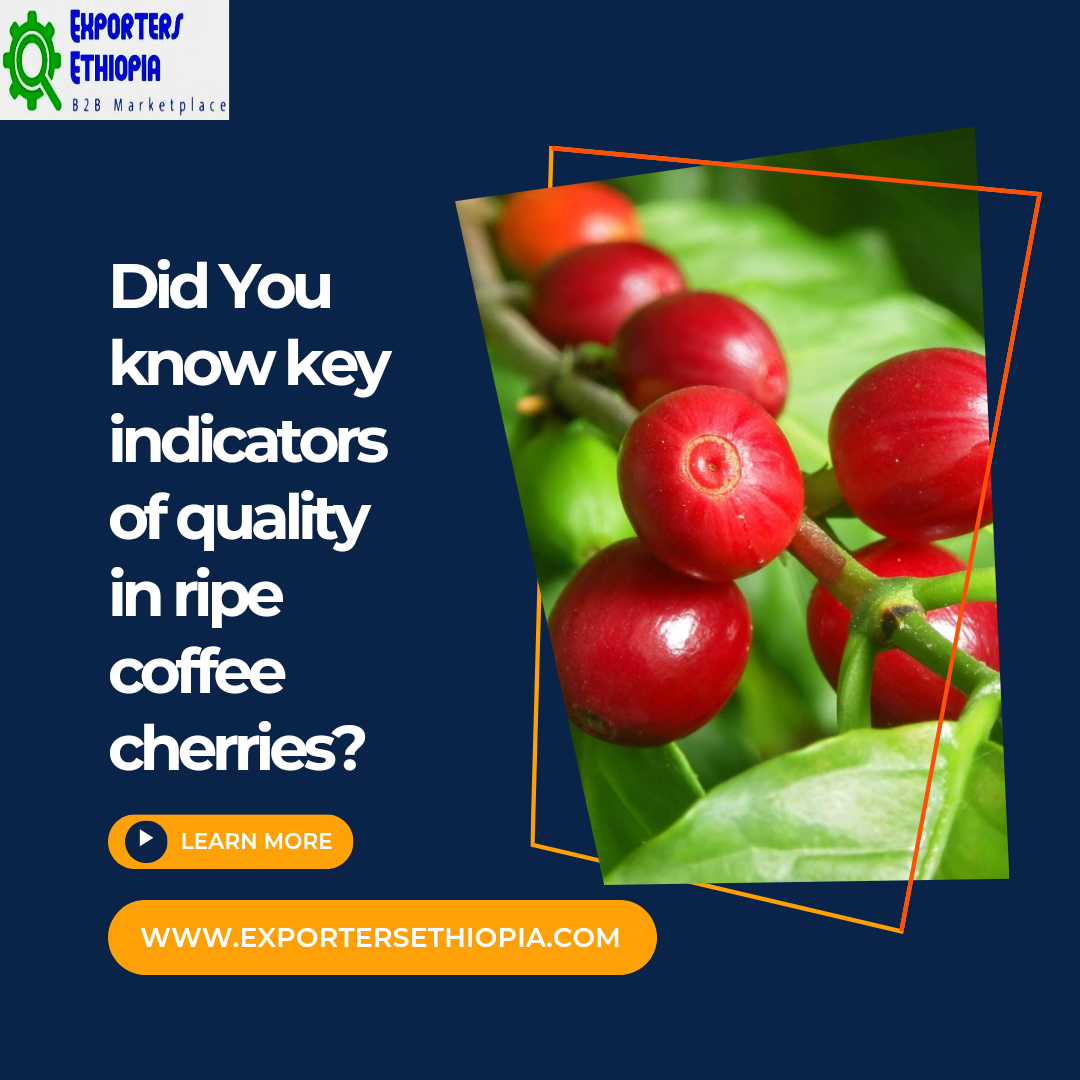𝐓𝐡𝐞 𝐄𝐱𝐜𝐞𝐥𝐥𝐞𝐧𝐜𝐞 𝐨𝐟 𝐌𝐚𝐭𝐮𝐫𝐞 𝐂𝐨𝐟𝐟𝐞𝐞 𝐂𝐡𝐞𝐫𝐫𝐢𝐞𝐬

The quality of ripe coffee cherries is a critical factor in determining the flavor and characteristics of the final coffee product. When coffee cherries are harvested at the peak of ripeness, they contain the optimal balance of sugars, acids, and other compounds that contribute to a rich and nuanced flavor profile. Here are some key indicators of quality in ripe coffee cherries:
1. Color: The color of the coffee cherries is a crucial visual indicator of ripeness. Depending on the coffee variety, ripe cherries may range from deep red to purple or yellow. For many varieties, a deep red color is often associated with optimal ripeness.
2. Size and Uniformity: Ripe cherries should be plump and relatively uniform in size. Uneven ripening can affect the consistency of flavor in the final coffee batch.
3. Texture: The skin of ripe coffee cherries should be firm and smooth. Overly soft or wrinkled skin may indicate overripeness or issues with the quality of the fruit.
4. Aroma: Ripe coffee cherries emit a sweet and fruity aroma. This aroma is a result of the development of sugars and aromatic compounds within the fruit.
5. Sugar Content: As cherries ripen, the sugar content increases. The sugars in the cherries contribute to the sweetness of the coffee. Coffee with high sugar content tends to have a more balanced and desirable flavor profile.
6. Acidity: Ripe cherries should have a balanced acidity. Acidity in coffee is a positive attribute that adds brightness and complexity to the flavor. Too much or too little acidity can impact the overall taste.
7. Harvest Timing: Harvesting at the right time is crucial. If cherries are picked too early or too late, it can affect the quality of the coffee. Picking at the peak of ripeness ensures the best flavor.
8. Processing Methods: The methods used to process the cherries after harvesting also play a significant role in determining coffee quality. Both dry (natural) and wet (washed) processing methods can produce high-quality coffee when done with care and precision.
9. Altitude and Growing Conditions: The altitude at which coffee is grown and the specific environmental conditions of the region can influence the development of flavors in the coffee beans. Coffees grown at higher altitudes often have more complex and nuanced flavors.
10. Varietal Characteristics: Different coffee varieties have distinct flavor profiles. Understanding the characteristics of the specific coffee variety being cultivated is essential for assessing quality.
 Tanner
Tanner Leather Products
Leather Products
Leave a Comment
Please login to be able to comment
Comments